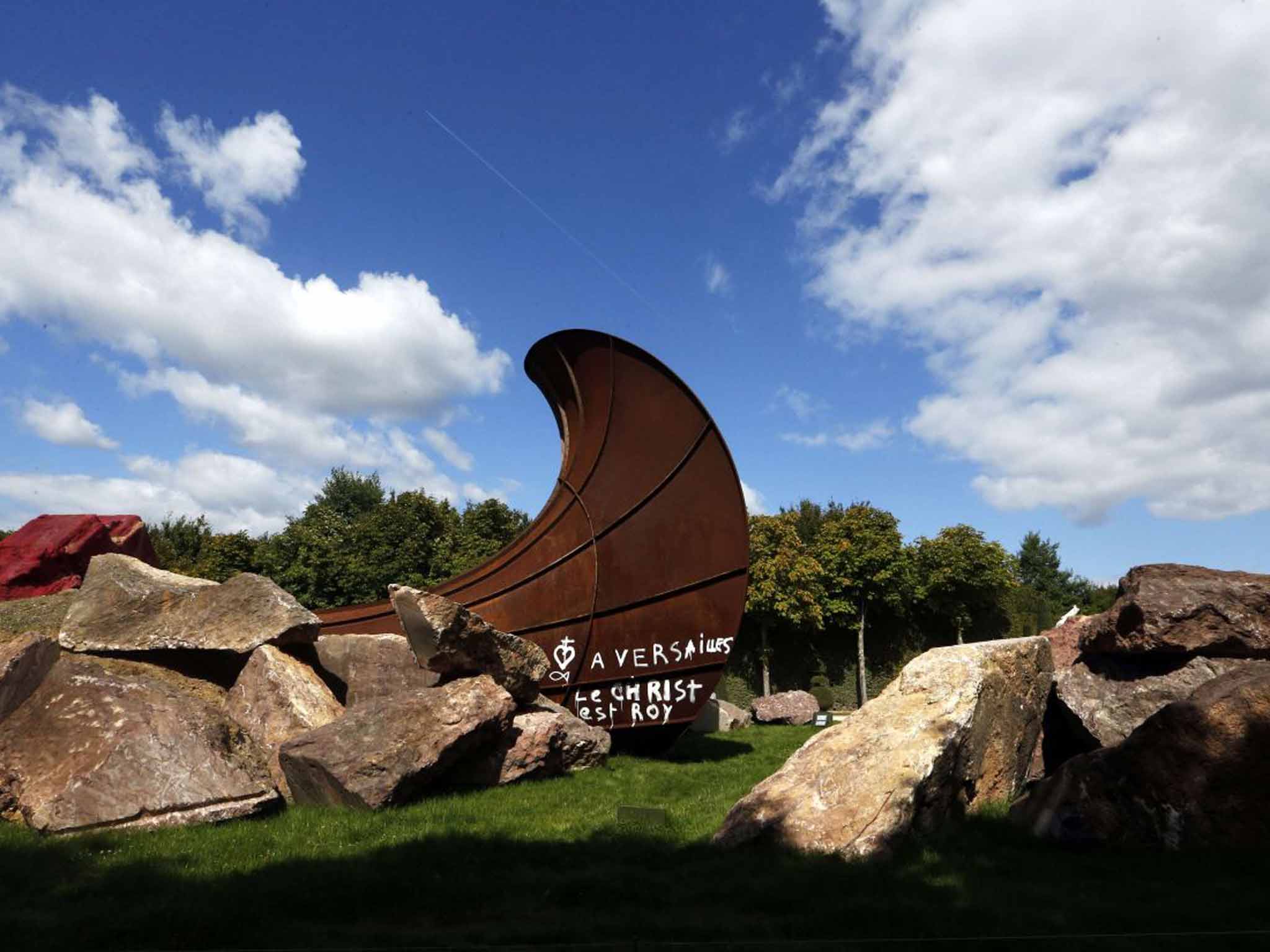Anish Kapoor's 'Dirty Corner': Can vandalism ever add to an artwork?
Despite the fact it's been daubed with offensive graffiti, Anish Kapoor says he may leave his sculpture as it is

When it was discovered that Anish Kapoor's sculpture Dirty Corner, which has taken up residence in the garden of Paris's Palace of Versailles since June, had been vandalised with anti-Semitic graffiti on Sunday, France's Minister for Culture, Fleur Pellerin, made a special visit to the controversial 60m by 10m steel and rock creation to condemn the perpetrators.
"I hope these people will be punished," she told reporters. "It's unbearable that in our country, where culture has a large role, and where freedom of expression has a large place too, that we can see such behaviour."
She called for an immediate clean up. But it wasn't the first time that the sculpture had been defaced; white and yellow paint was thrown over the artwork in June before being promptly washed off.
But the only person, it would seem, who wasn't immediately calling for the removal of the words was the artist Anish Kapoor himself. Instead, he suggested that the hateful sentiments should be kept.
"I had already questioned the wisdom of cleaning it after the first vandalism. This time, I am convinced that nothing should be removed from these slurs, from these words which belong to anti-Semitism that we'd rather forget," said Kapoor.
"From now on, in the name of our universal principles, these abominable words will become part of my work, they will overlay it and stigmatise it."
We hear plenty of stories about valuable works of art being ruined – Mark Rothko's Black on Maroon getting doused in ink; Marcus Harvey's Myra met with a barrage of eggs, for instance – but more often than not the pieces are painstakingly restored to their original glory by experts. Rarely do artists insist the damage stays; but that's not to say it doesn't happen.
In 1987, Antony Gormley's Sculpture for Derry Walls, consisting of three double cast-iron figures thought to represent the city's two dominant religious communities, was vandalised by local youths, who necklaced the statues (throwing a tyre round their neck before setting fire to them). Gormley was thrilled with the reaction.
"There was this splendid vision the next day of this totemic object that had really been made into a fetish... Red melted plastic was running like blood over the totally black charred head," he said. "This was excellent. This was the work as poultice throwing violence and evil on to itself that would otherwise be experienced in other ways."
Street artists Banksy and King Robbo would repeatedly paint over each other's work from 2009 until Robbo's death last year. Despite their feud, the pieces are now some of the most visited around London and Banksy even paid tribute to his rival with a mural when he died. Their tit-for-tat added to the interest.
And although Cecilia Gimenez's botched touching up of Elias Garcia Martinez's Ecce Homo (Behold The Man) caused ridicule around the world in 2012, "Beast Jesus" has since become a tourist attraction in Borja, Spain. The artist's relatives might say that the work "damages the honour of the family" but thousands of visitors now pay money to see it.
When the Chapman brothers bought a set of Goya's Disasters of War prints in 2001 and promptly changed all the visible victims' heads to clowns' and puppies' heads calling it Insult to Injury, it ignited a conversation about vandalism versus art.
Some thought it was the last taboo while others praised it as a commentary on war. "They weren't vandalising, they were intervening," says Louisa Buck, The Art Newspaper's contemporary art correspondent. "It was a comment on atrocity; it wasn't done without intention. It's a very different thing."
In 1953, Robert Rauschenberg erased a drawing by Willem de Kooning because he admired him so much. He even received De Kooning's permission for it, proving that destruction can, at times, be an act of love.
Then in a rather meta turn the Tate ran a show, "Art under Attack", in 2014. Exploring the history of physical attacks on pieces from the 16th century to the present day suddenly became an art show.
Buck insists it depends on the individual piece whether or not its destruction can provide the artwork with another layer of meaning. The motivation remains obvious, however. "Look at the amount of coverage and exposure you get [for ruining a work]," she suggests. "It gives an instant platform for your cause."
Whatever the reason behind the wrecking of a piece of art, sometimes their flaws can become their signature. Imagine the Venus de Milo with arms, for instance. We can only wonder if she would continue to fascinate us if she hadn't been broken.
Join our commenting forum
Join thought-provoking conversations, follow other Independent readers and see their replies
Comments